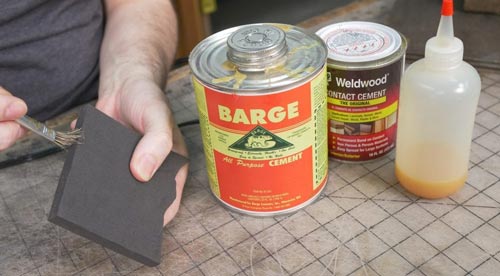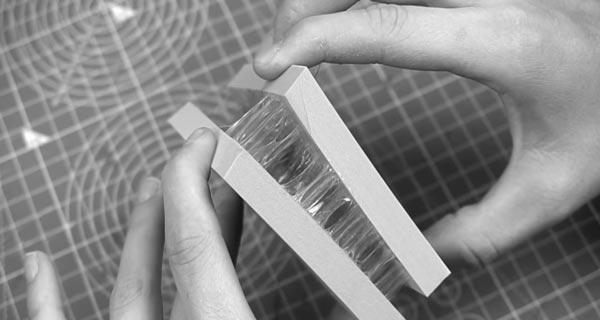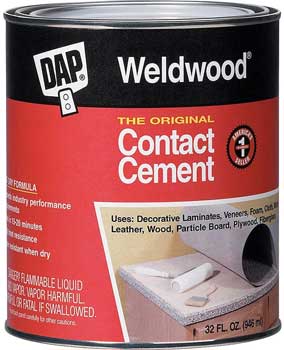Best Glue for EVA Foam in 2023: Top 6 Reviews & Buying Guide
If the right glue for EVA foam isn’t used, the foams may fall apart easily. This is why quality glue is very important. Various brands are offering glues for EVA foam, but not all of them can provide what they promise.
In this article, we’ll be sharing our choices for the top adhesive for EVA foam that you can find on the market. We’ve selected these products based on their chemical properties, features, cure time, and the strength of their bond.
So, let’s find the best glue for EVA foam that you can buy now.
Image | Name | Editor's Rating | Price |
|---|---|---|---|
Barge All-Purpose Cement Quart | 5 out of 5 | ||
Gorilla Clear Glue | 5 out of 5 | ||
Contact Cement | 4.5 out of 5 | ||
Bob Smith Industries BSI-142 | 4 out of 5 | ||
Barge 50-2128 | 4.5 out of 5 |
Table of Contents
Top 6 Best Glue for EVA Foam
Below are the glues we found most suitable for EVA foam. You can find their reviews here.
1. Barge 32 oz All Purpose Cement Quart

Talking about glue for EVA foam, the first brand that comes to mind is Barge. Barge has been the best friend of cosplayers and prop makers for years with its variety of EVA foam adhesive offerings.
The Cement Quart from Barge comes in a 32 fluid ounce can. According to the brand, this cement glue can be used with wood, leather, paper, etc., as well as EVA foam.
We all know that contact cement is the most effective form of glue for joining two compatible materials together. These aren’t only effective but are the most toxic ones as well. This is why you’re recommended to operate with a respirator while working with this.
However, there won’t be any smell after the curing, though there may be some smell before that. It takes different times for the curing process. If you apply it on EVA foam, it may require about 5 minutes for curing.
Highlighted Features:
- Doesn’t smell after the curing process
- Curing process can take five minutes at maximum
- Offers good value for money
- Versatile glue that works on different types of materials, including EVA foam
2. Gorilla 5.75 ounce EVA Foam Glue

Next up, we have Gorilla Glues. One unique characteristic of this glue is that it’s completely clear, whereas most glues in the market come in a color. This is one of the major advantages that makes it suitable for joining EVA foam.
This glue is made with a non-foaming formula, so you’ll be able to join painted EVA foam chunks without ruining the color. It’s also water-resistant, so you’ll be able to repaint the foam later on.
Needless to say, the glue is incredibly strong, and no matter how chunky the blocks of foam are, they’ll stick together. The only drawback of this EVA foam glue is that it takes a considerable amount of time to cure.
Once applied, you’ll need to clamp the foams together for two hours, after which you’ll have to allow it 24 hours for curing.
Highlighted Features:
- Non-foaming formula makes it suitable for joining painted foam
- This incredibly strong glue will keep heavy blocks of foam glued together
- Requires 24 hours for curing
- Water-resistant, so it won’t fall apart if the foams are repainted or dampened
3. DAP EVA Foam Contact Cement

This cement glue comes from the DAP store, and it’s a great choice for gluing EVA foam. This cement glue is essentially a neoprene rubber adhesive. As a result, it can be applied for joining different types of materials, including EVA foams.
It can form permanent bonds, meaning that you won’t have to worry about the foams falling apart anytime later. They are water-resistant as well, so the foams won’t come apart even when exposed to rain or when they’re repainted.
The glue will work instantly, which means there’s no curing time. Like every other cement glue, this one’s toxic as well. However, once it’s applied, the toxic properties do reduce to a great extent, making it safe for usage.
If you’re considering contact cement for foam, then we highly recommend this product.
Highlighted Features:
- Water-resistant properties make it suitable for creating props
- Doesn’t take any time for curing
- Forms a permanent bond instantly
- Toxic properties subside after the curing process is done
4. Bob Smith Industries BSI-142 Clear Foam-Cure

If you’re looking forward to buying the best Glue for Eva Foam on the market, then you better take a look at this one from Bob Smith Industries. What makes this unique is its versatile compatibility. This glue is compatible with all sorts of foams, and that includes EVA foam.
Once dry, this glue turns crystal clear. So, if you’re going to be applying the glue on an already painted surface, then this is what we’ll recommend, as you won’t have to repaint the foam.
The glue is designed to be applied to foam specifically. It’s also faster than most other glues, and it’ll require only 10 hours for curing.
Another unique factor about this glue is that its silicone-based glue. This makes it the best glue for EPP foam as well, as this type of foam doesn’t support all sorts of glues.
Highlighted Features:
- Takes only 10 hours to cure, which is faster than most glues
- Designed specifically for joining different types of foam
- Silicone-based constituent makes it perfect for EPP foam
- Turns crystal clear upon curing, making it suitable for providing a clean look
5. Barge 50-2128 Cement for EVA Foam

We have another product from Barge, the company known for producing the best contact cement for EVA foam. We’ve reviewed another cement glue from Barge, but this one’s a bit different from that.
This product can be applied on all types of surfaces, ranging from EVA foam to leather and glass. However, the cement likely won’t work if it’s applied on dirty or damp surfaces.
It doesn’t take much time to dry. You’re recommended to clamp it for 20 minutes at least, but it usually binds two foam pieces instantly. Thus, you’ll be able to join uneven and curvy pieces together effortlessly.
However, it’ll take at least 10 hours to cure, which is much longer than most cement glues.
Still, it’s considered a good choice because of its neutral color, as most cement glues are colored. Due to the neutral color, it’s considered to be an appropriate glue for craft foam cosplay.
Highlighted Features:
- Allows the user to bind curvy and uneven foam easily
- Cures faster than glues and easier to apply than other types of cement
- Offers a neutral color, making it more appropriate for creating props
- You can use it with all sorts of foams, be that EVA or EPP
6. DAP 00272 Original Contact Cement
Last but not the least, we have this contact cement from DAP. This product offers the same amount of cement as the first one we’ve reviewed, and it brings some unique features to the table.
It’s made with a solvent-based formula, so it’ll dry slower than other contact types of cement. Despite following a different formula, it’s very strong and can be used to join anything, including EVA foam.
You may need to heat the solution depending on the way you store it. Once applied, it will require about 20 minutes at a temperature of 75-degree Fahrenheit. So, this may not be the best glue for joining EVA foam instantly. Still, it’ll work great for forming a permanent bond.
It’s also resistant to most factors of weather, chemicals, and water. This makes it an even better choice for gluing EVA foam.
Highlighted Features:
- Can bind any material together permanently
- One coat will be effective enough for binding EVA foam
- Requires around 20 minutes for bonding at 70-degree Fahrenheit
- Resistant to factors of weather, most household chemicals, and water
Top 5 Glue for Eva Foam Comparison Table
Product Name | Curing Time | Finish After Curing | Type |
|---|---|---|---|
Barge All-Purpose Cement Quart | Instantaneous | Honey color | Contact cement |
Gorilla Clear Glue | Two hours | Crystal Clear | Glue |
Contact Cement | Instantaneous | Slight amber tint | Contact cement |
Bob Smith Industries BSI-142 | 10 hours | Crystal Clear | Glue |
Barge 50-2128 | Overnight | Clear | Contact Cement |
Glue for Eva Foam Buying guide

There are different types of glues for EVA foam, so it’s important to consider various factors before getting yourself one. In this section, we’ll discuss these factors briefly so that you can make a better choice.
Substrate
The first thing that you should consider before getting glue for EVA foam is whether it’s suitable for EVA foam or not. There are tons of glues on the market, and not all of them will work with EVA foam. The ones mentioned in this review do, and some of them can bond EPP foam as well.
Viscosity
Factoring the viscosity is important as it determines the type of bond you’ll be forming. Less viscous glues are suitable for forming thin bonds, whereas more viscous glues are better for forming thick bonds.
Required Time for Bonding
Bonding speed usually requires concurrent heat and humidity. Some glues even require additional heating for forming a bond. The time required for bonding also depends on the type of glue in use. While types of cement form bonds instantly, silicone-based glues need some time.
The bonding time can range from being instant to 20 minutes, depending on the factors briefed above.
Finish
You’ll find glues and types of cement that are either colored, opaque, or clear. There are also a few types of glue that remain colored initially but turn clear once they are cured. We recommend going for clear glue so that it doesn’t ruin the finish of your craft.
Curing Process and Time
This should be one of the major factors to consider while picking the best glue for EVA foam. There are various curing processes, and curing the product may or may not affect the craft.
There’s thermal curing as well as UV curing, and some glues don’t require any of them. Among the three, thermal curing is the fastest, while UV curing is the second-fastest.
However, UV curing can be applied to adhesives that contain substrates transmitting UV light. Then again, thermal curing may end up damaging the EVA foam.
So, even though curing without any catalyst might be the slowest, it’s mostly preferred by people who craft using EVA foam.
Frequently Asked Questions
Does super glue work on foam?
Not really. People tend to turn to super glue often, believing that it can join anything. However, super glues can’t join everything. If you apply super glue on EVA foam, then it’s likely to come off after a bit of flexing. So, you shouldn’t treat it as a permanent solution.
What’s the difference between glue and contact cement?
The major difference between glue and contact cement is that cement is a neoprene rubber adhesive that’s capable of creating an instantaneous bond. This is why most contact types of cement don’t require any time for bonding.
On the other hand, glues take much more time for bonding. You’ll even have to clamp the foams together after applying glue, or they’ll come apart.
Is thermal curing recommended for eva foam?
We usually don’t recommend thermal curing because heat may damage the EVA foam. If you’re joining painted foams, then the heat may make the paint runny, which is another disadvantage of thermal curing.
Is contact cement appropriate for binding fabric to eva foam?
We recommend hot glue for binding fabric to EVA foam over contact cement, as contact cement may damage the fabric. Then again, if the hot glue is too hot, it may damage the EVA foam. In this case, we’d recommend using a double-sided adhesive.
Final Words
Now that you know about the top products on the market, it’s time to pick the best glue for EVA foam by yourself. Each product brings a unique experience to the table. So, it’s important to consider which glue can make your experience more comfortable.
If you need to get things done faster, we’d recommend contact types of cement, Whereas glues are much better for providing a crystal clear finish. As you can see, it all boils down to your preference.
Related article that you may like:







